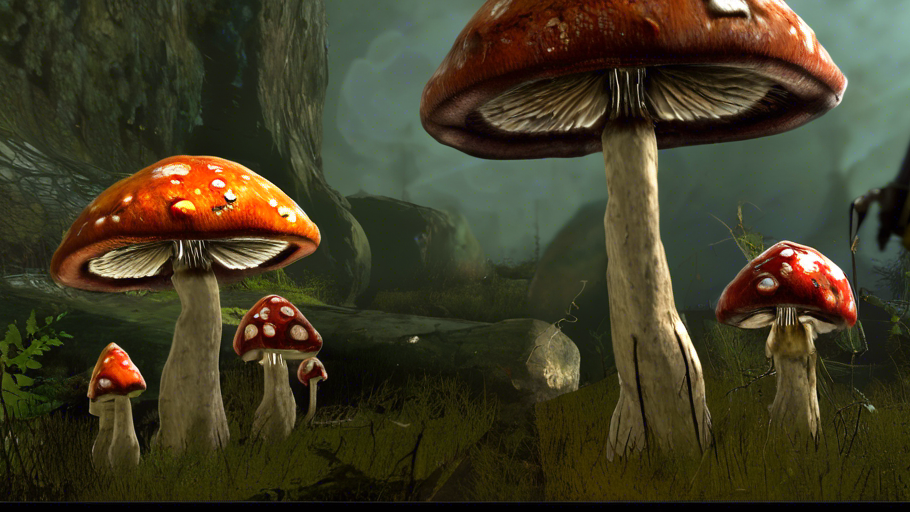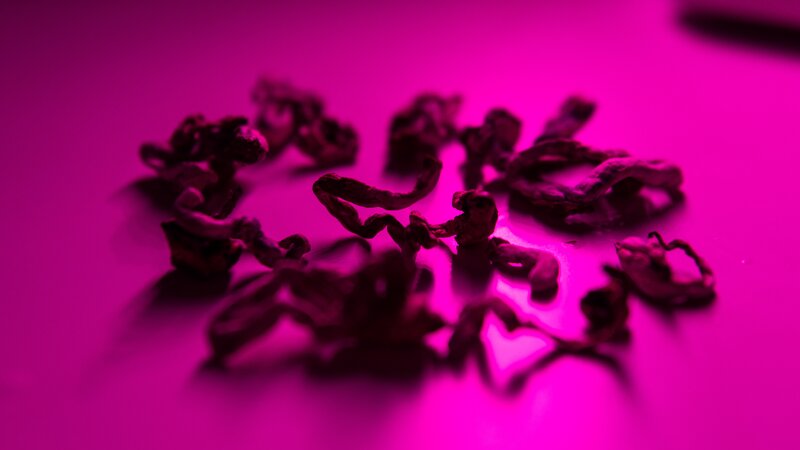Magic mushrooms, commonly referred to as shrooms, have fascinated humanity for centuries. Known for their psychoactive properties, these fungi contain compounds like psilocybin and psilocin that can induce profound changes in perception, mood, and thought.
As the conversation around their potential therapeutic benefits grows, so does the curiosity about how long these substances linger in the body, particularly in the context of drug testing.
This guide delves into the pharmacokinetics of shrooms, the factors that influence their detectability, and what to expect if you’re facing a drug test.
What are Shrooms?
Psychedelic mushrooms, or shrooms, are a group of fungi that contain hallucinogenic compounds, primarily psilocybin, which the body converts into psilocin. These substances bind to serotonin receptors in the brain, leading to altered states of consciousness. Historically, various cultures have used shrooms for spiritual and medicinal purposes; today, they are more commonly associated with recreational use. Despite their potential for profound experiences, shrooms are considered a Schedule I controlled substance in the United States, indicating a high potential for abuse and no accepted medical use.
The Psychedelic Experience
Shrooms interact with serotonin receptors in the brain, particularly the 5-HT2A receptor, which plays a significant role in regulating mood, cognition, and perception. The psychedelic experience typically begins within 20 to 40 minutes of ingestion, with the effects peaking around two hours later. Users may feel a sense of euphoria, experience visual and auditory hallucinations, and undergo profound introspective thoughts. However, not all experiences are positive; some may encounter “bad trips,” characterized by intense anxiety and paranoia.
The duration of a shroom trip can last up to six hours, with lingering effects that may persist for several hours after the primary effects have subsided. This variability in experience is influenced by several factors, including the potency of the mushrooms, the dosage, and the individual’s metabolism and health status.
Factors Influencing the Effects of Shrooms
The effects of shrooms are not uniform; they can vary widely from person to person and even from one use to another. Several key factors play a role:
- Dosage: The amount of psilocybin ingested will significantly affect the intensity and duration of the trip.
- Potency: Different species and strains of mushrooms contain varying levels of psilocybin.
- Individual Factors: A person’s metabolism, body weight, and overall health can influence how they process and react to psilocybin.
- Frequency of Use: Regular users may develop a tolerance, requiring higher doses to achieve the same effects.
How Long Do Shrooms Stay in Your System?
After ingestion, psilocybin is quickly metabolized by the liver into psilocin, the active compound responsible for the psychedelic effects. The half-life of psilocin—meaning the time it takes for half of the substance to be eliminated from the body—is roughly 50 minutes.
However, complete elimination from the body can take approximately five half-lives, or around four to five hours. Despite this, traces of psilocin can remain detectable in bodily fluids for longer periods.
Detection of Shrooms in the Body
The ability to detect shrooms in the body depends on the type of drug test administered. Urine tests, which are commonly used due to their non-invasiveness and long detection windows, can typically identify psilocin 1-3 hours after ingestion and up to 24 hours afterward. In some cases, particularly with frequent or high-dose users, psilocin may be detectable in urine for up to three days.
Blood tests can detect psilocin within 30-60 minutes post-ingestion, but the detection window is shorter—up to 12 hours. Saliva tests are less common but can identify psilocin within 30 minutes of use and remain positive for up to 24 hours. The most extended detection window is provided by hair follicle tests, which can reveal drug use within the last 90 days, although the substance typically becomes detectable in hair 7-10 days after consumption.
Factors Affecting Detection Time
Several factors can influence how long shrooms stay in your system and are detectable by drug tests:
- Time Between Ingestion and Testing: The closer the test is to the time of ingestion, the more likely it is that psilocybin will be detected.
- Mushroom Species: The concentration of psilocybin varies among different mushroom species.
- Method of Use: Whether the shrooms are ingested whole, brewed as tea, or taken in some other form can affect how quickly they are metabolized.
- Body Composition: Factors such as body mass index (BMI), metabolism, and water content can influence how quickly the body processes and eliminates psilocybin.
- Age: Generally, metabolism slows with age, potentially extending the time psilocybin remains detectable.
- Stomach Contents: The presence of food in the stomach can slow the absorption of psilocybin, while hydration levels can affect the rate of excretion.
- Concurrent Substance Use: The use of other substances alongside shrooms can impact the metabolism and detection of psilocybin.
Given the complexity of these factors, it’s challenging to provide a one-size-fits-all answer to questions like “how long do mushrooms stay in your pee?” or “how long does shrooms stay in your system for?” Each individual’s experience will differ based on their unique physiology and circumstances.
Drug Testing for Shrooms
While routine drug tests for employment or legal purposes typically screen for substances like cannabis, cocaine, and opiates, they do not usually include tests for psilocybin or psilocin. However, specialized tests are available that can detect the presence of these compounds.
Understanding the specifics of these tests is crucial, especially for individuals concerned about how long do shrooms stay in your system drug test.
- Urine Tests: The most common form of testing for psilocybin, urine tests can detect the substance within a window of 24 hours, and for up to 72 hours in heavy users. Given the short detection window, the timing of the test in relation to the last use is critical.
- Blood Tests: Blood tests can identify psilocin for a few hours after use, making them effective for detecting very recent shroom consumption.
- Hair Tests: Hair follicle tests provide the longest history of drug use, potentially revealing psilocybin ingestion for several months. However, these tests are more expensive and less commonly used.
Risks and Side Effects of Shrooms
The use of shrooms is not without risks. Short-term effects can include nausea, vomiting, muscle weakness, and lack of coordination.
Users may also experience anxiety or paranoia, and in some cases, the perception changes can lead to dangerous behavior or accidents.
There’s also the risk of poisoning from misidentified mushrooms that are toxic rather than hallucinogenic.
Long-term risks include the possibility of experiencing flashbacks or developing Hallucinogen Persisting Perception Disorder (HPPD), where individuals have recurring sensory disturbances.
There’s also a concern for the exacerbation of pre-existing mental health conditions, such as triggering or worsening symptoms of anxiety and depression.
Addiction and Recovery
While shrooms are not considered physically addictive, they can lead to psychological dependence, especially with frequent use. Signs of a psychological addiction to shrooms might include developing a tolerance, experiencing cravings, or continuing to use despite negative consequences.
If you or someone you know is struggling with substance use, resources like SAMHSA’s National Helpline offer confidential help.
Recovery from psychological addiction to shrooms involves a combination of medical detox, psychological interventions, participation in support groups, and making healthy lifestyle changes.
Facilities like California Prime Recovery and The Edge Treatment Center provide specialized care and support for individuals seeking to overcome addiction.
Tips for Accelerating Elimination from the System
For those looking to expedite the elimination of psilocybin from their bodies, several measures can be taken:
- Hydration: Drinking plenty of water can help flush out toxins and accelerate kidney filtration.
- Exercise: Physical activity can boost metabolism, aiding in the quicker breakdown and elimination of substances.
- Healthy Diet: Consuming a diet rich in fruits, vegetables, and antioxidants can support the body’s natural detoxification processes.
Ultimately, patience is key, as the body needs time to naturally clear psilocybin from the system.
Seeking Professional Help
If you have concerns about substance use or its impact on your life, professional help is available. Organizations like Narcotics Anonymous and the Support Group Project provide community and support for those dealing with addiction.
For immediate assistance, consider reaching out to healthcare professionals or utilizing hotlines for confidential advice.
Conclusion
Understanding how long shrooms stay in your system is essential for those who may be subject to drug testing or who are concerned about the health implications of their use. While the effects of shrooms can be profound and sometimes beneficial, they also come with risks that should not be taken lightly.
If you’re considering using shrooms, it’s important to be informed about their potential impact on your body and your life.
For those seeking to understand or overcome the use of psychedelic mushrooms, remember that resources are available, and recovery is possible. With the right support and information, individuals can make informed decisions and find the help they need.

